This site is part of various affiliate programs. Links may give us a small compensation for any purchases you make, at no additional cost to you. Please read the disclaimer policy for full details.
My top choice is the Canon imagePROGRAF PRO-300, with the Canon PIXMA PRO-200 a very close second, thanks to its much lower price and nearly comparable excellent print quality.
Finding the best photo printer can be a minefield of unanswered questions, from the quality of the photo print, to how long the printer’s ink lasts. In the past, I’ve struggled to find really solid dedicated photo printers that will stand the test of time, printing high quality photos without costing a fortune in ink.
Now, I’m putting all of my research and experience into this article, to make it easy for you to find the best photo printer for photographers, so your pictures look as good on the wall as they do on your monitor.
This article will cover every high quality photo printer on the market today, including Canon printers reviews, a comparison of top models like the Canon Pro 100 vs Pro 200, and will show you why the best inkjet photo printer currently available is the Canon imagePROGRAF PRO-300.
The full photo printer reviews of the best printer for photographers includes the below models:
- Best Portable Photo Printer – Canon SELPHY CP1300
- Best HP Printer for Home Use – HP Tango
- Best HP Photo Printer – HP ENVY 6055
- Best Canon Photo Printer – Canon imagePROGRAF PRO-300
- Canon Pixma Photo Printer – Canon PIXMA G2200
- Best Canon Printers All in One – Canon PIXMA TS6320
- One of the Best Inkjet Printers – Canon Pixma iX6820
- Professional Photo Printer – Canon Pixma Pro-100
- One of the Best Photo Printers – Canon Pixma Pro-200
- Best Photo Printer for Home – Canon TS8320
- Best Large Format Printer – Canon imagePROGRAF PRO-1000
- Best Epson Photo Printer – Epson Expression Photo HD XP-15000
- Epson Professional Photo Printer – Epson SureColor P700
- Best Epson Printer for Home – Epson EcoTank ET-2760
- Epson All in One Photo Printer – Epson Expression Premium XP-7100
Comparisons of the Best Printer for Photos
Take a look at the table below for comparisons of the best printer for photos. Further down the article are the full reviews, including Epson printer reviews.
Printer | Image | Pros / Cons | No. of Inks & Ink Life | Max. Print Width | Check Price |
| 10 Inks 50 sheets | 13 inches | |||
| 1 Ink 50 sheets | 4 inches | |||
| 2 Inks 180 sheets | 8.5 inches | |||
| 4 Inks 4000 sheets | 8.5 inches | |||
| 5 Inks 70 sheets | 8.5 inches | |||
| 2 Inks 470 sheets | 8.5 inches | |||
| 2 Inks 65 sheets | 8.5 inches | |||
| 10 Inks 20 sheets | 13 inches | |||
| 8 Inks 50 sheets | 13 inches | |||
| 6 Inks 70 sheets | 13 inches | |||
| 5 Inks 600 sheets | 13 inches | |||
| 12 Inks 700 sheets | 17 inches | |||
[The Best Photo Printer] |
| 10 Inks 500 sheets | 13 inches | ||
[Best Home Photo Printer] |
| 8 Inks 500 sheets | 13 inches |
What Makes Top Rated Photo Printers?
The best photography printers all share several traits in common, ranging from high print quality, to long lasting ink cartridges, and the ability to print on many different sizes of paper.
I have determined which are the top rated photo printers using the criteria below, listed in order of importance. If you want to do any further research, feel free to use the questions in this list to guide you.
- What is your price limit?
- How good is the color accuracy?
- What print sizes are possible?
- What’s the DPI of each print?
- How many sheets can each ink cartridge print?
- What is the printer’s connectivity?
Price Limit
Cost varies significantly when looking for the best printer for photo printing, from over $1000 for a dedicated top end machine, down to $150 for a still very good photo printer that has all in one capabilities.
Your budget will determine how good a printer overall you can get, and may also steer you towards certain brands – in Canon vs Epson photo printers, Canon tend to offer a wider range of budget printers, along with some very expensive models.
Color Accuracy
The best color printer for photos will offer a wide gamut of colors and superior accuracy than other models, with prints matching what you would see on a calibrated monitor.
It stands to reason that to have the widest range of most accurate colors in a print requires a printer that can take a wide range of different inks. The most basic printers have only two ink cartridges – one color and one black. Obviously this means that color accuracy will be lacking.
For the highest level of color accuracy, you should be looking at the Canon 6 color photo printers at least, or a model with even more individual color cartridges. The most expensive model reviewed here has an 11-color system of individual inks, allowing a much more subtle gradation of colors in your pictures.
Don’t forget that to ensure your prints come out exactly as you expect, you should be making a printer test image and using a color accurate monitor. You can find the best options in the article on the best monitors for photo editing. Getting color accurate prints is much easier if you use the soft proofing options in Photoshop, so if you are not using that, I would always recommend it for preparing your prints.
When thinking about printer brands for the best color accuracy, Canon will always win out in Canon vs HP printers, and Epson will offer better colors in Epson vs HP printers, but in terms of Epson vs Canon printers, the final print tends to look pretty similar – as long as you have an Epson or Canon printer, you can be assured of very good color accuracy, and a wide color gamut.
Print Sizes
Small, portable photo printers like the Canon Selphy are often only capable of printing at maximum sizes of 6″ x 4″, approximately postcard sized and suitable for photo albums or for using in a collage of images for your wall.
But the best Canon printer for photos, the Canon Pro-300, prints at up to sizes of 19 inches wide, which means that you can create stunning centerpiece displays on your walls without having to order prints from a specialist printing company. Of course, printers that can produce pictures in this size are physically much larger than more constrained printers, so if you are wanting large prints, make sure you have space for the printer first.
Although you will pay more money for large format printers, the results can be truly stunning, particularly for cardstock printing and these come highly recommended if you care at all about displaying your photography in its best light.
Dots per Inch (DPI)
It’s typical to consider the maximum physical size of each print to determine the best printer for pictures, but you should also take into account the dots per inch, or DPI, that each printer can handle.
This refers to how tightly spaced the individual dots of color on the print are, with a higher DPI meaning that prints can contain very fine detail, and do not begin to look fuzzy as you get closer to them. This is less a concern for smaller prints, but is very important when you get to large format sizes.
As an example, the best inkjet photo printer has a DPI in the long axis of 4800, while the worst is 300 DPI. There is a clearly noticeable quality difference between prints from these two devices.
Number of Prints per Ink Cartridge
A major concern when looking for photo printers is the length of time each ink cartridge will last for before running dry. This is of particular concern for devices which contain multiple cartridges like the Epson 6 color inkjet printer and above.
If your printer only has one color and one black cartridge, you only have to pay for two cartridges to get a full replacement, and can often buy generic ink. If you need to replace 11 color cartridges on the other hand, you will obviously be forced to spend a lot more money, and generally will have to buy official ink, as not enough people own the more expensive, specialist printers, so generic ink companies do not produce ink for them.
In theory, when comparing Epson vs Canon photo printers, an Epson printer will normally run out of ink quicker than a Canon inkjet, but in practice there is very little difference between brands.
I have listed ink cartridge average life, and approximate replacement cost, for each photo printer in the full reviews.
Connectivity
It has now become standard for printers to connect to your home WiFi, meaning that prints can be sent remotely, without having to plug a cable into your computer. I have noted in the full reviews which printers are WiFi accessible, and which aren’t.
Also, many printers now have touchscreen interfaces which you can use to preview prints and even make minor edits. These printers are generally more straightforward to use.
Photo Printer Reviews
You can find the full printer reviews below, including the Canon Pixma printer reviews, the HP photo printer reviews, and the Epson photo printer reviews
1. Canon imagePROGRAF PRO-300
Best Canon Photo Printer
- Cost:$$$$
- No. of Inks: 9 + 1 Chroma Optimizer
- Ink Life: From 100 – 500 (A2 prints)
- Ink Cost (Official / Generic): Check Price (around $123 in 01/22) / N/A
- Max. Print Size: 39 x 13 inches
- DPI: 4800 x 2400
- Connectivity: WiFi, Ethernet, USB
- Size: 25.2″ x 15″ x 7.9″
- Pros:
- Best professional photo printer
- Fantastic photo print quality
- Superb color accuracy and vibrancy that pops
- Reasonably priced for the quality of prints
- Relatively cheap replacement ink cost
- Smaller and lighter than the Pro-1000
- Very long, panoramic prints possible
- Cons:
- Expensive
As the best large format printer, and the best Canon printer, the Pro-300 is maybe the perfect blend of professionalism and home use. This large photo printer is the smaller brother of the Pro-1000, with comparable print quality and color accuracy, but in a smaller, cheaper package. When comparing the Canon Pro 300 vs 1000, you lose two inks from the Pro-1000, and four inches of maximum width, but this make very little difference to most people, in practice.
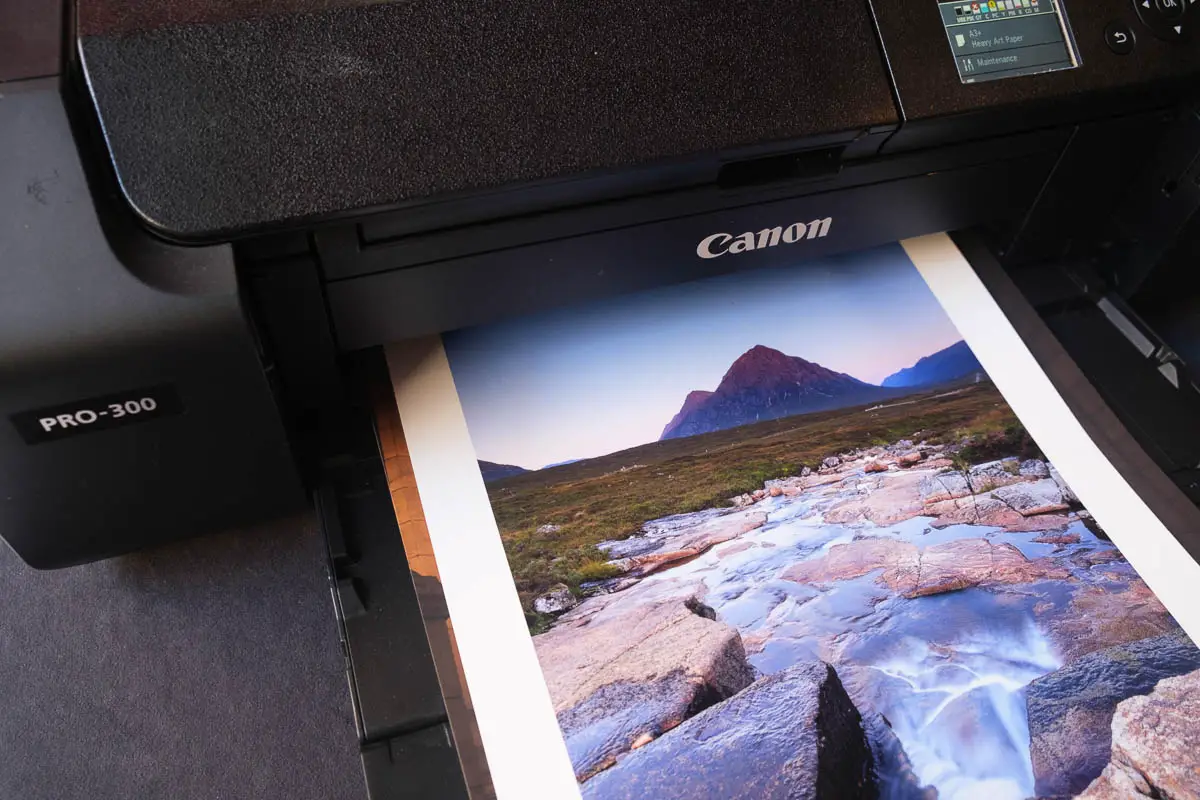
The Pro-300 beats the Pro-1000, in my opinion, based on two factors: the much lower price, and much lower official ink replacement cost. The Pro-300 is essentially a home version of the Pro-1000, designed to be used intermittently, rather than everyday. It takes up a relatively small amount of desk space for a professional photo printer, and far less than the Pro-1000.
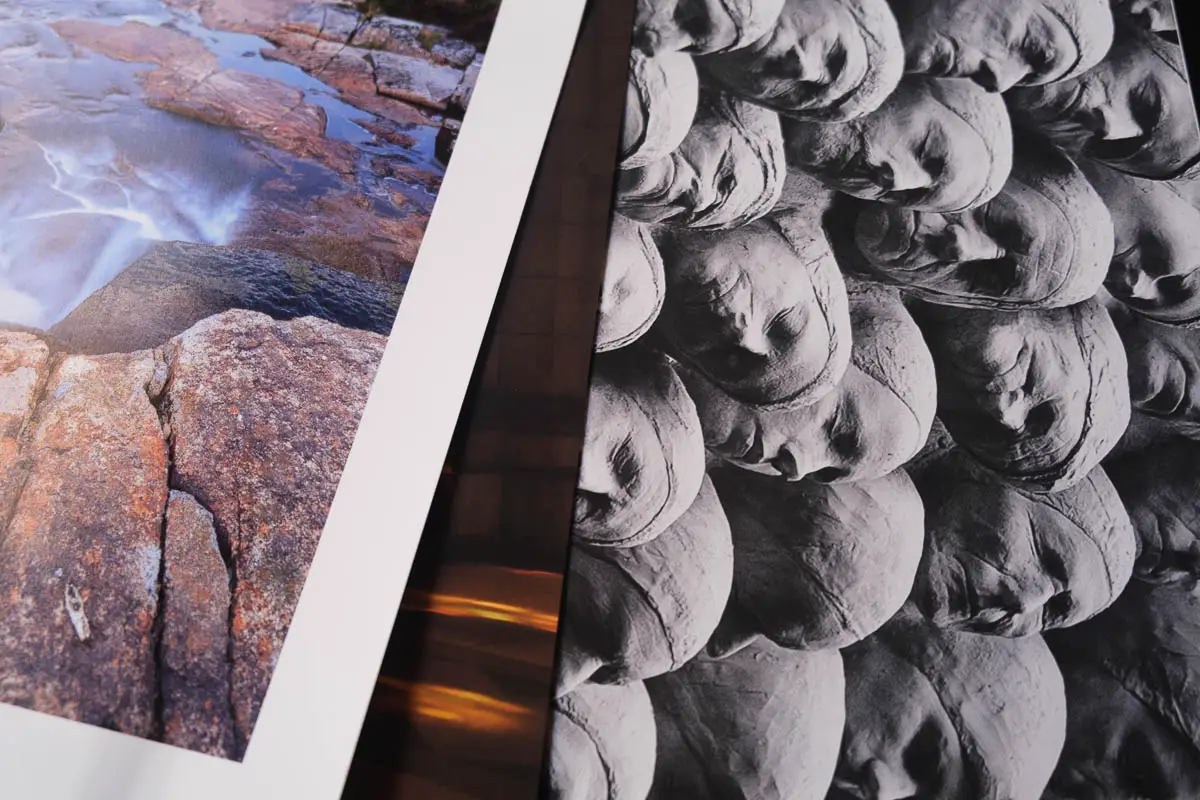
You are not going to get any better print quality than this without going to a dedicated photo lab. As long as you are not intending to make tens of prints everyday, which is when the Pro-1000 comes into its own, then you are not going to find a better photo printer than the Pro-300, the best professional photo printer.
Canon Imageprograf Pro-300 vs Epson P700
When looking at the Canon Pro 300 vs Epson P700, which has comparable high print quality, the main difference you will see will be in your wallet, as the Pro 300 is so much more economical in terms of ink usage, while delivering almost exactly the same level of vibrant, powerful colors.
Take a look at the full video review below for more details.
Canon Pro 300 vs Pro 1000
Comparing the Canon imagePrograf Pro-300 vs Pro 1000, there are a few key differences. The Pro 1000 has extra inks which should in theory make the prints more vibrant, and can also print at a larger print size. However, ink cost is significantly higher. Despite the larger ink cartridges of the Pro 1000, this printer uses more ink during startup and the cleaning cycles, therefore meaning that the raw cartridge capacity (80ml vs 15ml in the Pro 300) can’t be taken as a direct cost saving.
2. Canon PIXMA PRO-200
Best Large Format Printer for Photographers
- Cost:$$$
- No. of Inks: 8
- Ink Life: From 100 – 500 (A2 prints)
- Ink Cost (Official / Generic): Check Price (around $106 in 01/22) / N/A
- Max. Print Size: 39 x 13 inches
- DPI: 4800 x 2400
- Connectivity: WiFi, Ethernet, USB
- Size: 25.2″ x 15″ x 7.9″
- Pros:
- Newest model, an update of the Pro-100
- Vibrant, sharp colors
- Cheaper version of the Pro-300, with nearly the same quality of prints
- Low ink cost per sheet
- Borderless printing up to A3
- Lighter than the Pro-300, but the same size
- Very long, panoramic prints possible
- Cons:
- Dye-based inks rather than pigment inks on the Pro-300
- Difficult to find compatible inks due to the newness of the printer
The Pixma Pro 200 is essentially Canon’s answer to the best large format photo printer for more hobbyist users. Personally, I still feel the Pro 300 is a better fit for most users, but directly comparing the Canon Pro 200 vs Pro 300, the saving of several hundred dollars can really reduce the difference between them. You also lose 1 ink and the chroma optimizer with the Pro 200, but otherwise get a printer with similar, if not the same, specs.
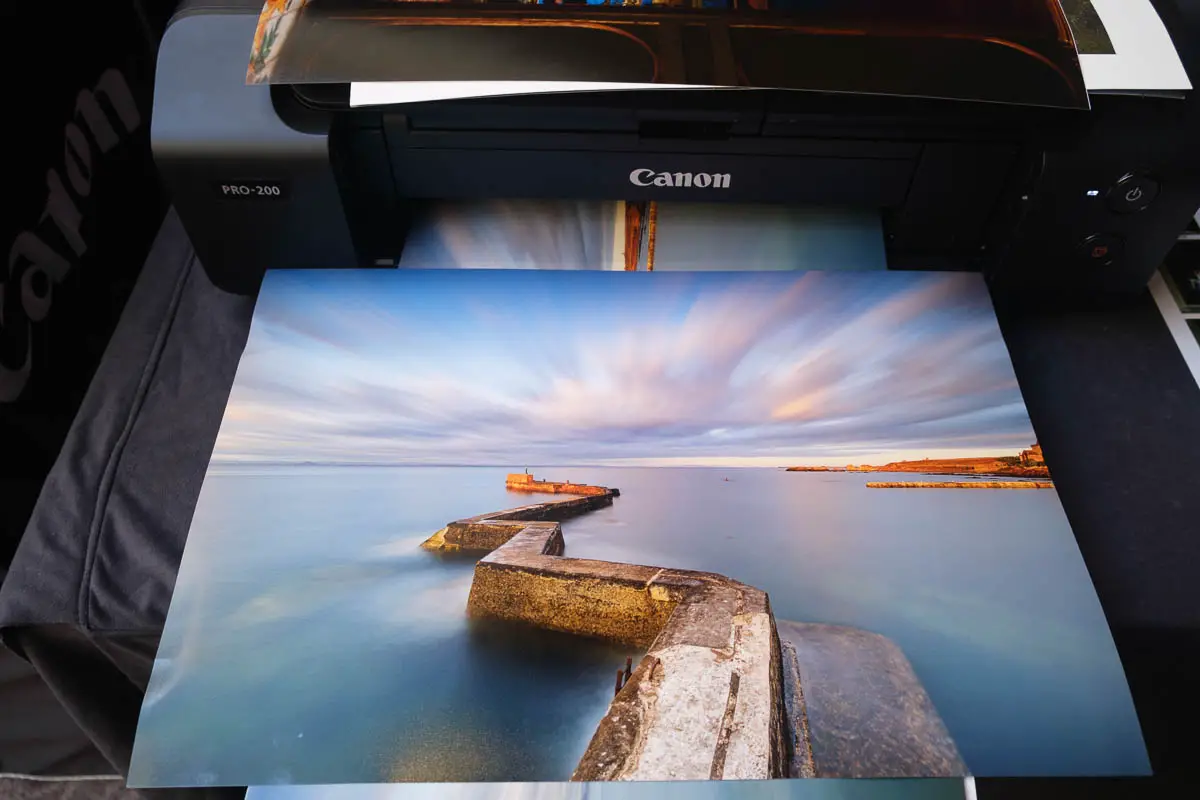
As an example, inherited from the Pro 300 is the Auto Skew Correction function, which will automatically align paper that was entered incorrectly in the feed bin, to avoid skewed images and wasted paper and ink.
You also get access to the Canon Professional Print & Layout software, which acts in a standalone, or Lightroom / Photoshop plugin mode, to soft proof your photos before printing, ensuring that the final print is exactly as you intended. You shouldn’t have any color management issues when using this.
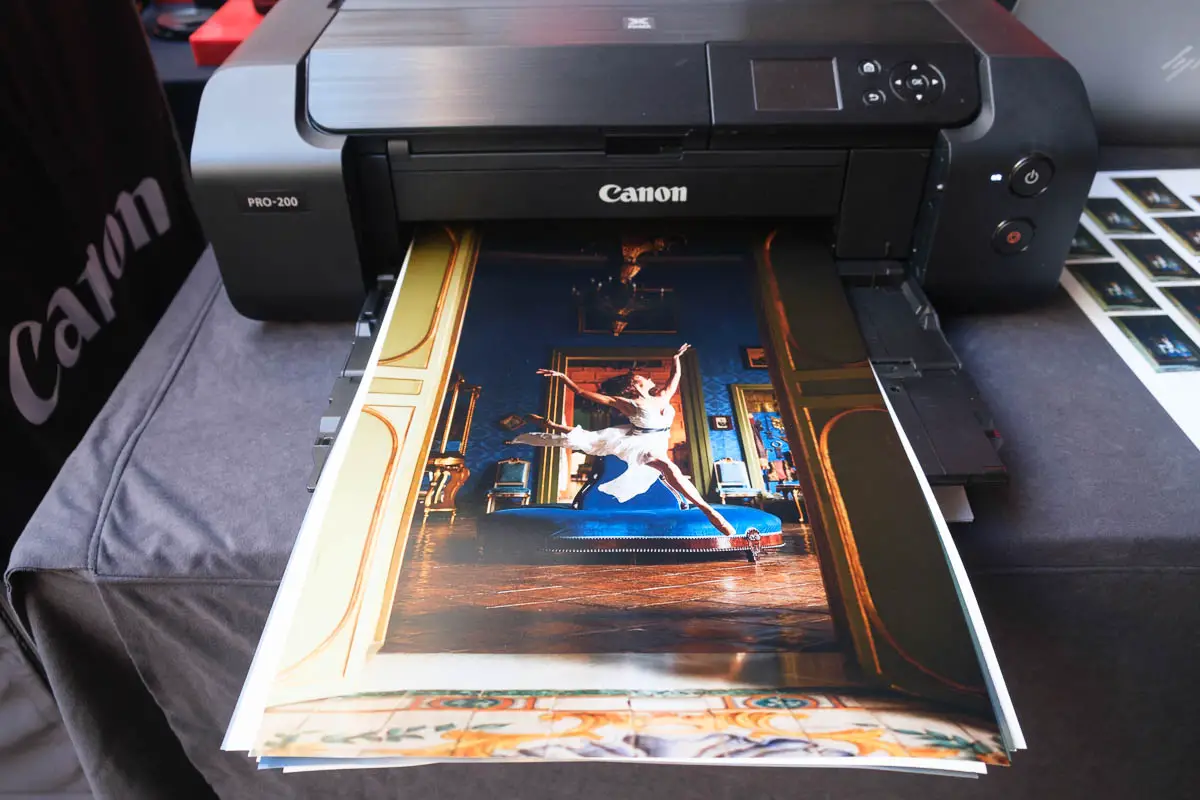
Canon Pixma Pro 200 vs 300
Making a comparison of the Canon Pixma Pro 200 vs Prograf 300, the top two photo printers currently available, there isn’t much to separate them. The Pro 300 offers technically better print quality, but at a higher price and a higher ink cost. For most home users, the Pro 200 is the better choice, unless you will be printing a large volume of photos, where the Pro 300 is preferred.
Canon Pixma Pro 200 vs 100
When comparing the Canon Pro 200 vs Pro 100, you will see a number of updates from the older model, particularly with borderless printing at up to A3, a much reduced weight, and two main paper feed options.
Canon Pixma Pro 200 vs Epson XP 15000
Looking at the Canon Pro 200 vs Epson XP 15000, the Epson is around half the price of the Canon, but also only has six inks compared to the Pro 200’s eight inks. You therefore see higher print quality with the Pro 200, but at a higher cost of ink, and with a higher cost device.
Overall, the Pixma Pro-200 is an excellent choice for best large format photo printer if you are on a more limited budget.
3. Canon imagePROGRAF PRO-1000
Canon Professional Photo Printer
- Cost: $$$$$$
- No. of Inks: 11 + 1 Chroma Optimizer
- Ink Life: Approx. 700 sheets (at 11″ x 17″)
- Ink Cost (Official / Generic): Check Price (around $59 x 12 ($720) in 01/22) / Check Price (around $375 in 01/22)
- Max. Print Size: 22 x 17 inches
- DPI: 4800 x 2400
- Connectivity: WiFi, Ethernet, USB
- Size: 28.5″ x 17″ x 11.2″
- Pros:
- Best professional photo printer
- Supports sheets up to 17 inches wide
- Stunning photo quality
- Brilliant color accuracy with deep blacks and perfect colors
- Cons:
- Very large and heavy (70.5 lbs!)
- Very expensive
The Pro-1000 is the largest printer reviewed here, capable of producing prints 17 inches wide, making it fantastic for making prints for walls or for any other large format use.
The photo quality and color accuracy are second-to-none, with bright, brilliant colors from the 11 individual color cartridges, plus the chroma optimizer that really makes colors pop. If you do see poor quality prints with this, it will be a problem with your photo, not the printer – this printer gives such amazing detail you will see all the little flaws in your photos!
The printer is huge, and will take up a lot of desk space. Ink life is relatively good, and you should be able to get a few hundred prints before needing replacements. Bear in mind that these come in at over $700 for official Canon cartridges. Although slightly cheaper generic ink is available, it is not going to have the same pop as official ink. If you can’t afford the refills, then you can’t afford the printer.
Canon Prograf 300 vs 1000
When comparing the Canon Pro 1000 vs Pro 300, you will notice that the Pro 300 has much cheaper ink, at not much more than $100 for a full set. In my opinion, this makes the Pro 300 much better value for money, even if you do lose two inks in the process.
4. Canon Pixma iX6820
Canon Pixma Review
- Cost: $$
- No. of Inks: 5
- Ink Life: Approx. 375 sheets (black) / 600 sheets (color)
- Ink Cost (Official / Generic): Check Price (around $99 in 01/22) / $24
- Max. Print Size: 19 x 13 inches
- DPI: 9600 x 2400
- Connectivity: WiFi, Ethernet, USB
- Size: 23″ x 12.3″ x 6.3″
- Pros:
- Low cost option for home photo printing
- Excellent photo print quality
- High color accuracy with vibrant colors
- Good cost-per-print
- Good photo printing speed (< 1 min)
- Cons:
- Plasticky and cheap feeling build quality
- No display screen
This Canon Pixma photo printer is the most affordable high-end model that still produces near professional level prints. Photo print quality is excellent, with even small details clearly defined. There is minimal color banding and good color accuracy, although this is of course not as high as on the models with a greater number of inks.
When comparing the Canon Pixma ix6820 vs Pixma Pro 100, the Pro 100 has superior print quality, but not by an amount that you are likely to notice unless you hold the print close to your face. The ix6820 has cheaper inks and is a much newer model, therefore being smaller and lighter, and more suitable for a home environment. Combined with the substantially larger number of prints, the ix6820 is a better choice for most.
You can print at up to 13 inches wide, making this a large format printer, with a very high DPI of 9600 x 2400. Combined with the long ink life and very cheap generic ink replacement cartridges (three sets for $15!), the ix6820 is the best low cost option for home photo printing, in my opinion.
5. Epson Expression Photo HD XP-15000
Best Epson Photo Printer
- Cost: $$$
- No. of Inks: 6
- Ink Life: Approx. 100 sheets (black) / 70 sheets (color)
- Ink Cost (Official / Generic): Check Price (around $77 in 01/22) / $59
- Max. Print Size: 44 x 13 inches
- DPI: 5760 x 1440
- Connectivity: WiFi, Ethernet, USB
- Size: 14.5″ x 18.7″ x 6.3″
- Pros:
- Top choice for home users wanting professional prints
- Excellent photo quality
- Fantastic color accuracy from the Claria HD inks
- Relatively fast photo print speeds
- Two input trays
- Small footprint for it’s max print size
- Cons:
- High cost-per-print
- Control screen not touchscreen
- Generic inks rarely work in Epson printers
If you wanted to know what is the best Epson photo printer, then you have found it in the Expression XP-15000. The price is relatively low for such a high quality device, that gives you excellent photo quality and fantastic color accuracy, almost at a professional level.
Essentially, you are getting a printer designed for home users, with easy set up and a small footprint, that delivers professional level prints. You can really only beat this with a much more expensive printer, or by going to a pro lab.
As with all Epson printers, Epson regularly sends out firmware updates that block generic inks from working. For this Epson 6 color photo printer, you are looking at nearly $100 for a full set of genuine inks, which offer superb color accuracy, but do not last long. Nonetheless, this remains the best Epson printer for photos.
Epson XP-15000 vs Canon Pro 100
When comparing the Epson Expression Photo HD XP-15000 vs Canon Pro-100, there’s not a huge difference in print quality, with both offering very high quality, colorful prints. Personally, I would prefer the Epson, as it is a more recent model, and has a lower cost-per-page when you take ink life into the equation, but both are equally good choices if you can get a good deal.
Epson XP 15000 vs Canon Pro 200
Comparing the Epson Expression Photo HD XP-15000 vs Canon Pro-200, the Canon does offer better print quality thanks to the two extra inks, but this does come at about twice the cost. If you want ultimate print quality, then it has to be the Canon Pro 200, but the Epson is a very capable printer for home use.
6. Canon Pixma Pro-100
Canon Pixma Pro 100 Professional Photo Printer Review
- Cost: $$$$
- No. of Inks: 8
- Ink Life: Approx. 50 sheets (A3+ size)
- Ink Cost (Official / Generic): Check Price (around $117 in 01/22) / $52
- Max. Print Size: 19 x 13 inches
- DPI: 4800 x 2400
- Connectivity: WiFi, Ethernet, USB
- Size: 27.13″ x 15.16″ x 8.46″
- Pros:
- Relatively cheap generic ink available
- Photo lab high quality prints and color accuracy
- Relatively fast printing (A3 size in 90 secs)
- Includes two gray inks for superior black and white printing (after tuning)
- Cons:
- Superseded by the Pro-200, and now too expensive
- Limited max length of prints
- No screen
The Pixma Pro-100 is now a few years old, meaning the price should be reasonable, but it is actually massively overpriced by resellers, although there is a wide selection of generic ink now available. You will be getting photo lab quality prints, with exceptional color accuracy for your money – essentially professional prints.
The Pro-100 is designed more for home users than those printing every day, meaning that ink nozzles should not become clogged if there is a longer period of weeks between prints.
Although there are two gray inks in addition to the black, you will need to spend some time fine tuning the output to produce perfect black and white images. But if you do, you will have one of the best black and white printers on the market.
Surprisingly, generic ink is available relatively cheaply for the Pro-100, although this is not likely to give you the wow factor that you will get with official Canon ink.
Canon Pixma Pro-100 vs Pro-200
I love the Pro-100, and find it an excellent high-end, yet cost effective choice. There are now better, more recent models available, which you will see if you compare the Canon Pixma pro 100 vs 200, but the print quality is already at the maximum for this model, so cannot really be improved upon. With the extra money for more up-to-date printers, all you are paying for is a slightly smaller size, and improved usability, such as a touchscreen.
7. Epson SureColor P700
Epson Professional Photo Printer
- Cost: $$$$
- No. of Inks: 10
- Ink Life: Approx. 20 large sheets (A3+ size)
- Ink Cost (Official / Generic): Approx. $380 / N/A
- Max. Print Size: 129 x 13 inches
- DPI: 5760 x 1440
- Connectivity: WiFi, Ethernet, USB
- Size: 20.3″ x 30.3″ x 16.5″
- Pros:
- Can make huge prints
- Fantastic photo quality and color accuracy
- Fast photo printing for large prints (A3 in 2 mins 30 secs)
- Easy to use touchscreen and excellent connectivity
- Cons:
- Very expensive
- High cost-per-print
- Maintenance cart can use up a lot of ink
- Comes with ‘demo’ smaller ink cartridges
As the successor to the Epson Surecolor P600 inkjet printer, the Epson SC P700 offers much the same high quality performance, but in an up-to-date package. You are getting photo lab quality images here, with fantastic color accuracy and photo quality, but this comes at a steep price.
Improvements include the printer now containing two kinds of black cartridges, one for gloss and one for lustre paper, with the printer auto-switching to the relevant black, depending on the photo paper type being used.
With large format photo printers, you generally expect a very large, heavy printer, but the P700 is remarkably small and light for its capabilities, coming in at 30% smaller than the previous model, the P600. Still, you will need a large desk space to fully accommodate the P700.
If you’re serious about your photography, and intend to produce a lot of very large, extremely high quality photo prints, then the P700 will serve you well, but if you are a more price conscious user, or you are not printing regularly, then a cheaper model, like the Epson Expression Photo HD XP-15000, would suit you better.
Epson P700 vs Canon Pro 200
Looking at the Canon Pro 200 vs Epson P700, you see two very similar printers. The Canon Pro 200 is the preferred choice by most though, as it is both a significantly cheaper printer, and with cheaper replacement ink. Print quality is very similar, and you are unlikely to notice the presence of the extra two inks that you get with the Epson SureColor P700 in practice.
Epson SC P700 vs Canon Pro 300
When comparing the Epson P700 vs Canon Pro 300, you might see a slightly technically better print from the P700, but this is unlikely to be noticeable in practice. The main difference is in the much cheaper ink of the Pro 300, which has one of the best value for money ink replacement sets, and is an order of magnitude lower than the P700, and with a comparable overall device cost.
8. Canon PIXMA PRO-10
Best Monochrome Photo Printer
- Cost: $$$$$
- No. of Inks: 10
- Ink Life: Approx. 50 sheets (A3+)
- Ink Cost (Official / Generic): Check Price (around $135 in 01/22) / $65
- Max. Print Size: 19 x 13 inches
- DPI: 4800 x 2400
- Connectivity: Wifi, Ethernet, USB
- Size: 27.13″ x 15.16″ x 8.46″
- Pros:
- Excellent photo print quality, particularly for monochrome
- Lovely colors if properly calibrated
- Includes photo black and matte black inks, plus a chroma optimizer
- Consistent print quality
- Cons:
- Fairly old model – you are better looking at the Pro 200
- Expensive
- No display screen
The Canon Pixma Pro-10 is an older photo printer from the same generation as the Pro-1 and Pro-100, sitting comfortably in the middle with 10 inks, which include two types of black. Comparing the Canon Pro 100 vs Pro 10, the Pro-100 has 8 inks, losing one of the blacks.
This is important, as the combination of the photo black and matte black make the Pro 10 probably the best monochrome printer, although this does come at the cost of a high price tag which cannot really be justified when there is the much cheaper and more recent Pro-200.
9. HP ENVY 6055
Best HP Photo Printer
- Cost: $
- No. of Inks: 2
- Ink Life: Approx. 130 sheets (black) / 65 sheets (color)
- Ink Cost (Official / Generic): Check Price (around $30 in 01/22) / Check Price (around $45 in 01/22)
- Max. Print Size: 11 x 8.5 inches
- DPI: 4800 x 1200
- Connectivity: Wifi, USB
- Size: 17.03″ x 14.21″ x 5.2″
- Pros:
- Very good photo print quality
- Fantastic color accuracy
- Access to HP instant ink – free 5 x 7 photo prints!
- Small, compact, and easily fits on your desk
- Cons:
- Poor cost-per-print ratio
- No automatic scanning features
- No display screen
As the best HP printer for photos, you would expect the Envy 6055 to deliver superior photo print quality and color accuracy, and it does. With the ability to produce borderless prints, with the colors well-defined and strong detail, this also makes a case to be the best affordable printer given it’s near $100 current price.
The included scanner is useful, though does not have any automatic sheet feeding functions. But combined with the very good photo print quality, this is the best home all in one printer.
Although the color ink cartridge will only produce about 65 prints before requiring a relatively pricey replacement, you can currently sign up for HP instant ink on buying this printer (first 2 months free, then $2.99 / month). This gives you enough ink for 50 sheets per month, plus unlimited photo prints at up to 5 x 7 inches. You still have to buy photo paper of course, but ink will be ordered by the printer using WiFi when running low, so that you never run out.
With HP instant ink, the Envy 6055 becomes the best HP printer for photo printing.
10. Canon PIXMA TS5320
Best Canon Printers All in One
- Cost: $
- No. of Inks: 2
- Ink Life: Approx. 230 sheets (black) / 470 sheets (color)
- Ink Cost (Official / Generic): Check Price (around $60 in 01/22) / Check Price (around $26 in 01/22)
- Max. Print Size: 14 x 8.5 inches
- DPI: 4800 x 1200
- Connectivity: Wifi, Bluetooth, USB
- Size: 14.9″(L) x 14.2″(W) x 5.6″(H)
- Pros:
- Excellent photo print quality
- Low cost-per-print
- Two separate paper trays for regular and photo paper
- Fast photo printing (approx. 30 secs / photo)
- Cons:
- Mediocre color accuracy
- Small screen that is not touch
- No automatic scanning features
Photo print quality from the TS5320 is excellent, as you would hope from a modern printer produced by a well-known photography brand like Canon. The colors are vibrant, with perfect saturation, and details are sharp pleasing to the eye. Color accuracy doesn’t quite follow print quality, and you are likely to see colors not quite matching those on your monitor, but the extra inks mean that quality is still better when comparing the HP Envy 6055 vs Canon Pixma TS5320.
Cost-per-print is surprisingly good for a Canon printer, particularly when it comes to color-only printing. These color photo prints also come out relatively quickly, in just over 30 seconds on average, meaning you shouldn’t have to wait long if printing a large volume.
The scanner is fairly standard for printers in this price range, with no automatic document feeder or duplex mode, and the printer’s display screen is also pretty small, but remains functional and easy to use. It’s pretty similar to the HP Envy 6055 in this respect.
It’s handy to have two separate paper trays, so that you can load the printer with photo paper and regular paper, meaning you can easily use this for day-to-day printing, and for more specialist photo printing.
11. Epson Expression Premium XP-7100
Epson All in One Photo Printer
- Cost: $$
- No. of Inks: 5
- Ink Life: Approx. 100 sheets (black) / 70 sheets (color)
- Ink Cost (Official / Generic): Check Price (around $72 in 01/22) / Check Price (around $30 in 01/22)
- Max. Print Size: 14 x 8.5 inches
- DPI: 5760 x 1440
- Connectivity: WiFi, Ethernet, USB
- Size: 23.50″ x 17.20″ x 8.10″
- Pros:
- Good (but not perfect) color accuracy
- Good photo printing quality with vibrant colors
- Excellent, duplex scanner
- Touch screen controls
- Automatic document feeder
- Cons:
- Epson send firmware updates to their printers that can prevent generic ink cartridges from working
- Very high ink cost per page and short life per ink cartridge
- Slow printing speed (over 1 min / photo)
As an all in one, Epson A4 photo printer, the XP-7100 is a good choice for a family or home printer, particularly if you intend to do a lot of scanning. The automatic document feeder and ability to sheetfeed the scanner means you don’t have to manually switch out papers, or flip them over to scan the other side – the scanner will do it all for you.
You get 4 color cartridges, plus a black, but the page yield is very poor, being unlikely to deliver over 100 sheets in practice before the ink needs replacing. Epson also have a habit of sending firmware updates to their printers to prevent generic inks from being used. Of course, generic ink producers can adapt their products to get around this, so check recent Amazon reviews of any generic inks before purchase to make sure that they still work.
There’s plenty of connectivity options, including WiFi, and you are able to print borderless prints with good color accuracy and vibrant colors. As a casual photo printer, the XP-7100 works well, but is left behind for more professional levels of prints but dedicated photo printers.
12. Epson EcoTank ET-2760
Best Epson Home Printer
- Cost: $$
- No. of Inks: 4
- Ink Life: Approx. 3400 sheets (black) / 4000 sheets (color)
- Ink Cost (Official / Generic): Check Price (around $54 in 01/22) / Check Price (around $27 in 01/22)
- Max. Print Size: 14 x 8.5 inches
- DPI: 5760 x 1440
- Connectivity: WiFi, Ethernet, USB
- Size: 13.70″ x 14.80″ x 8.70″
- Pros:
- Comes with a huge amount of ink and fantastic cost-per-print
- Replacement ink bottles can print up to 7500 sheets
- Small and compact
- Good photo printing quality
- Cons:
- No SD card support
- Can be difficult to reach paper jams
- Small screen, that doesn’t support touch
- Slow photo printing speed (approx. 90 secs)
The ET-2760 is the best Epson printer for home thanks to the insane level of ink that it can hold. You will be hard pressed to find a photo printer with a better cost-per-print ratio than this. Rather than having ink cartridges, the printer has individual color reservoirs that you fill with ink. This supertank system means that it is relatively cheap to refill, and can potentially go years without needing to be topped up.
There is an integrated scanner, which does not have any automatic features, and an app that you allows you to print from your phone via WiFi. You can’t print directly from SD cards, but most photographers would likely be printing photos following an edit, so would be printing from their computers.
Photo printing quality is generally good, although color accuracy is not great, and you may see a lack of vibrancy. Nonetheless, for very high volume printing, the ET-2760 is one of your best bets.
13. HP Tango
Best HP Home Printer
- Cost: $
- No. of Inks: 2
- Ink Life: Approx. 180 sheets
- Ink Cost (Official / Generic): Check Price (around $87 in 01/22) / Check Price (around $48 in 01/22)
- Max. Print Size: 14 x 8.5 inches
- DPI: 4800 x 1200
- Connectivity: WiFi, Bluetooth, USB
- Size: 8.11″ x 14.84″ x 3.58″
- Pros:
- Strong wireless support, including hands-free printing through Alexa
- Looks good and very small and compact
- Access to HP’s instant ink service – free photo prints!
- Relatively quick print speed
- Cons:
- No integrated scanner – scans via phone app
- Not for high volume printing
- Photo print quality not as strong as dedicated photo printers
The Tango makes a good case to be the best HP printer for home use, with its very compact size, print, copy and scan features, and strong app support and hands-free printing through Alexa. You will need a phone in order to make best use of this printer, with scanning performed via the app.
The printer is small enough to easily sit on your desk, and looks good doing so. The paper tray is relatively small however, so is not suited to high volume printing. Photo print quality is good, but nowhere near the pricier printers that are dedicated to photo printing.
Perhaps one of the most useful features is the inclusion of two months free of HP’s instant ink service (costing $2.99 / month thereafter). This predicts when you will run out of ink (through sensors in the printer), and automatically sends you new cartridges. For the price, you get enough prints for 50 pages per month, and free unlimited photo prints up to 5 x 7 inches. If you want to print a lot of photos at or below this size, then this printer becomes an absolute steal.
14. Canon SELPHY CP1300
Best Portable Photo Printer
- Cost: $
- No. of Inks: 1 (Dye Sublimation)
- Ink Life: Approx. 50 sheets
- Ink Cost (Official / Generic): Check Price (around $30 in 01/22) / Check Price (around ($23 in 01/22)
- Max. Print Size: 6 x 4 inches
- DPI: 300 x 300
- Connectivity: WiFi, Memory Card, USB
- Size: 7.1″(W) x 5.4″ (D) x 2.5″(H)
- Pros:
- Most compact, portable printer
- You can edit prints from the printer’s screen
- Excellent connectivity, and can print from SD cards
- Best printer under $100
- Optional battery pack for even better portability
- Cons:
- Slow print speed due to dye sublimation process
- Max print size is 4″ x 6″
As the best mini photo printer, the Canon Selphy is perfect if you are intent on printing photos when not at home. This portable photo printer prints at 4×6 inches max photo size, as you would expect for such a small picture printer – you are not getting large prints from it.
The optional battery pack makes this incredibly portable, and the additional modes like ‘photo booth’ are a lot of fun for party photography.
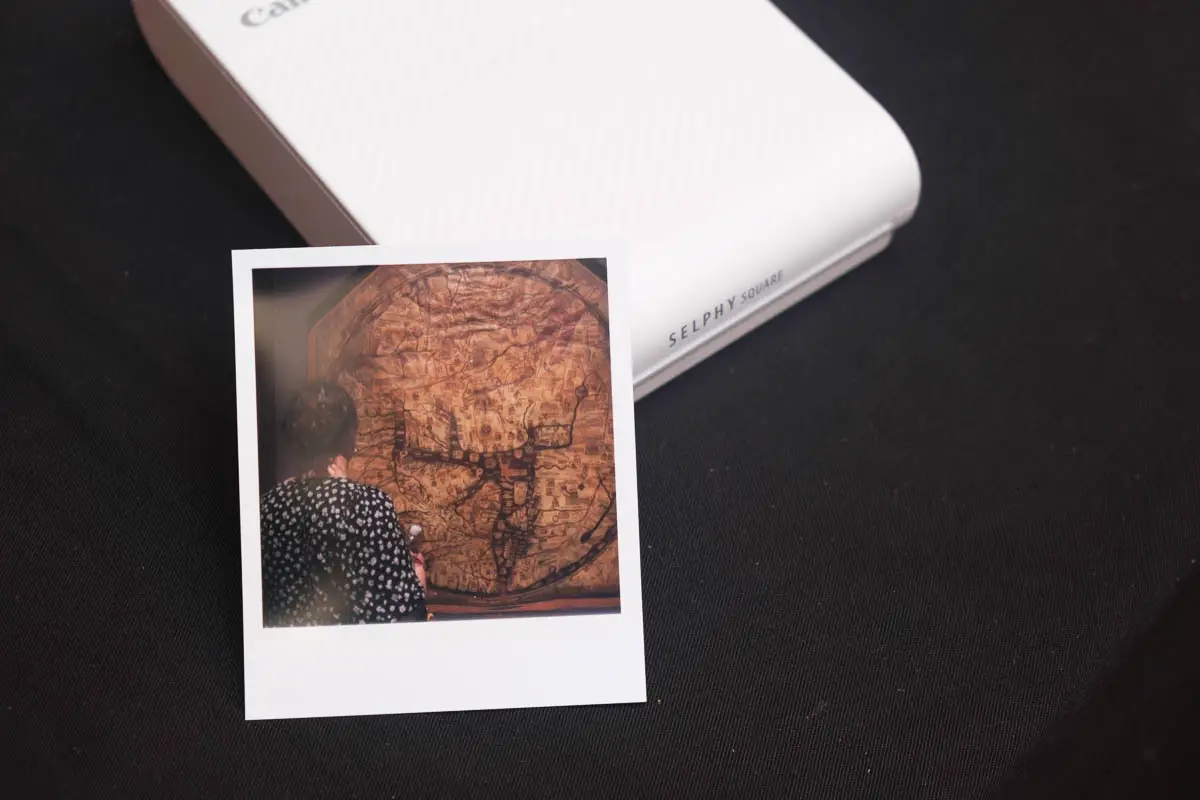
Although this may not seem like a good choice of printer for serious photographers, it does have one advantage over every other printer reviewed here – it is dye sublimation rather than inkjet. This means that printing takes much longer, as each print has to go through multiple passes to complete, but by using ribbons that use heat to transfer the dye onto your print, you get much better tonal transitions and gradations.
Print quality for dye sublimation printers is considered much higher than for inkjet printers thanks to the increased number of colors possible (16.8 million!), meaning prints from the Selphy are likely to be those that most closely match the image on your monitor. As one of the best printers under 100 dollars, the Selphy is an excellent choice for a carry-around, secondary printer, and for general family printing.
Final Thoughts
There are plenty of excellent choices when you are looking for a printer for photos. Canon make the best premium photo printers at present, with Epson producing some excellent budget models that will satisfy even the most demanding hobbyists.
Ultimately, I prefer the larger format Canon’s, both for their print quality, but also their ease of use, but really any of the options listed here would make an excellent choice for anyone looking for the best photo printer.
The Best Photo Printer
-
- Can handle pretty much any weight of photo paper, at least up to 150 lb / 400 gsm
- Newest model, an update on the Pro-100
- Vibrant, sharp prints with beautiful colors
- Low ink cost per sheet
- Up to 13 inch wide prints possible
- Borderless printing up to A3
- Dye-based inks, so very slight color cast for black and white images under different light sources
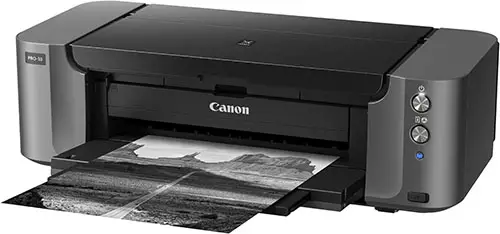
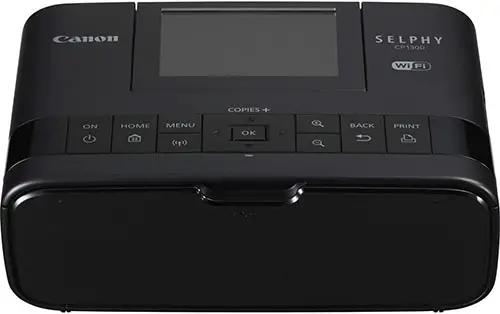
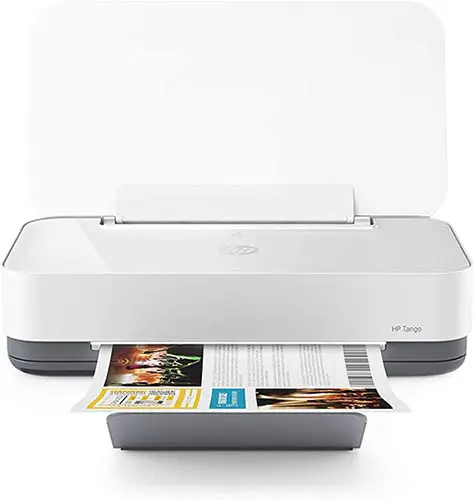
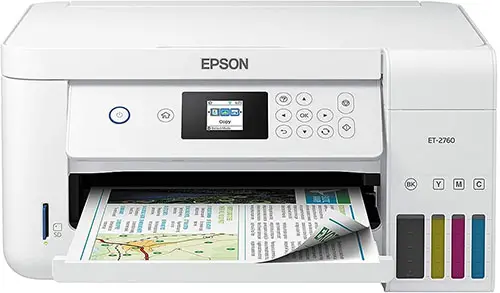
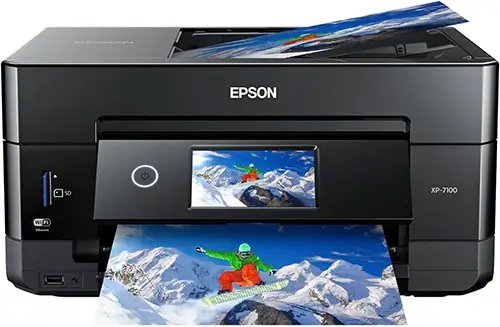
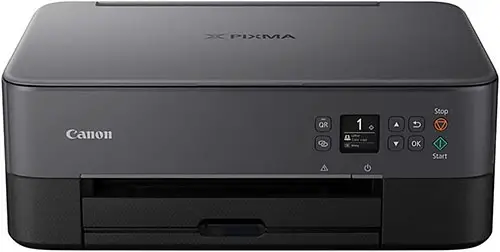
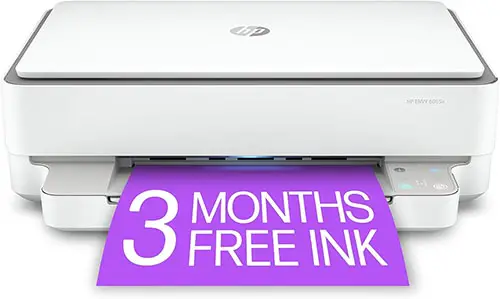
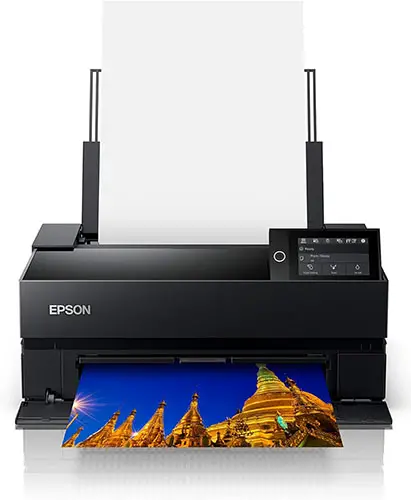
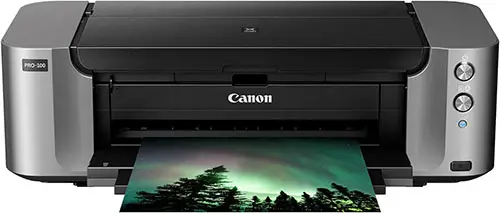
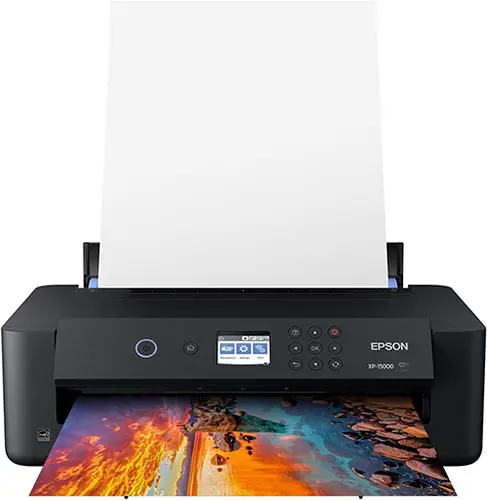
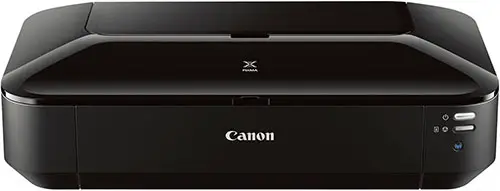
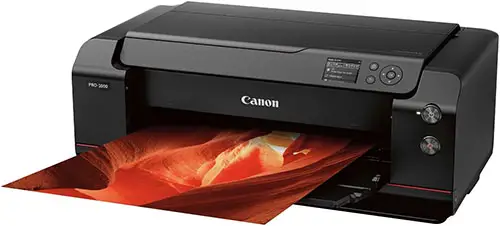

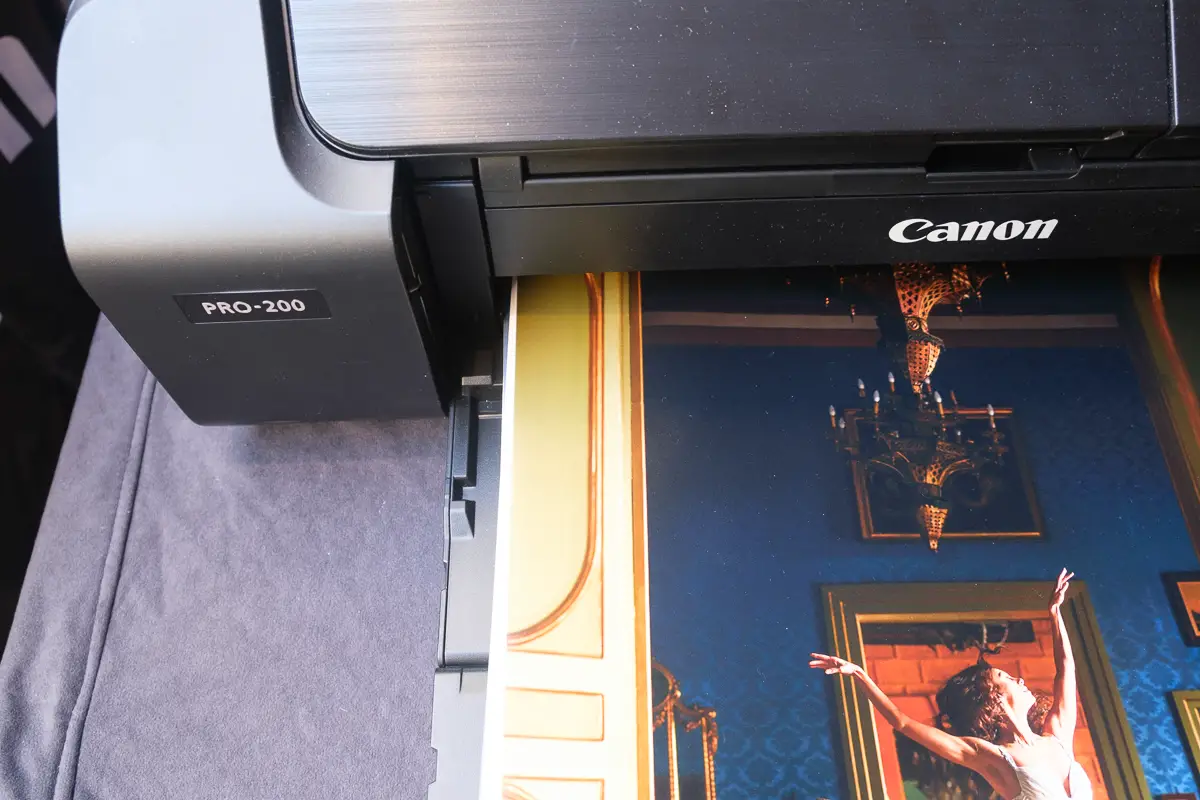
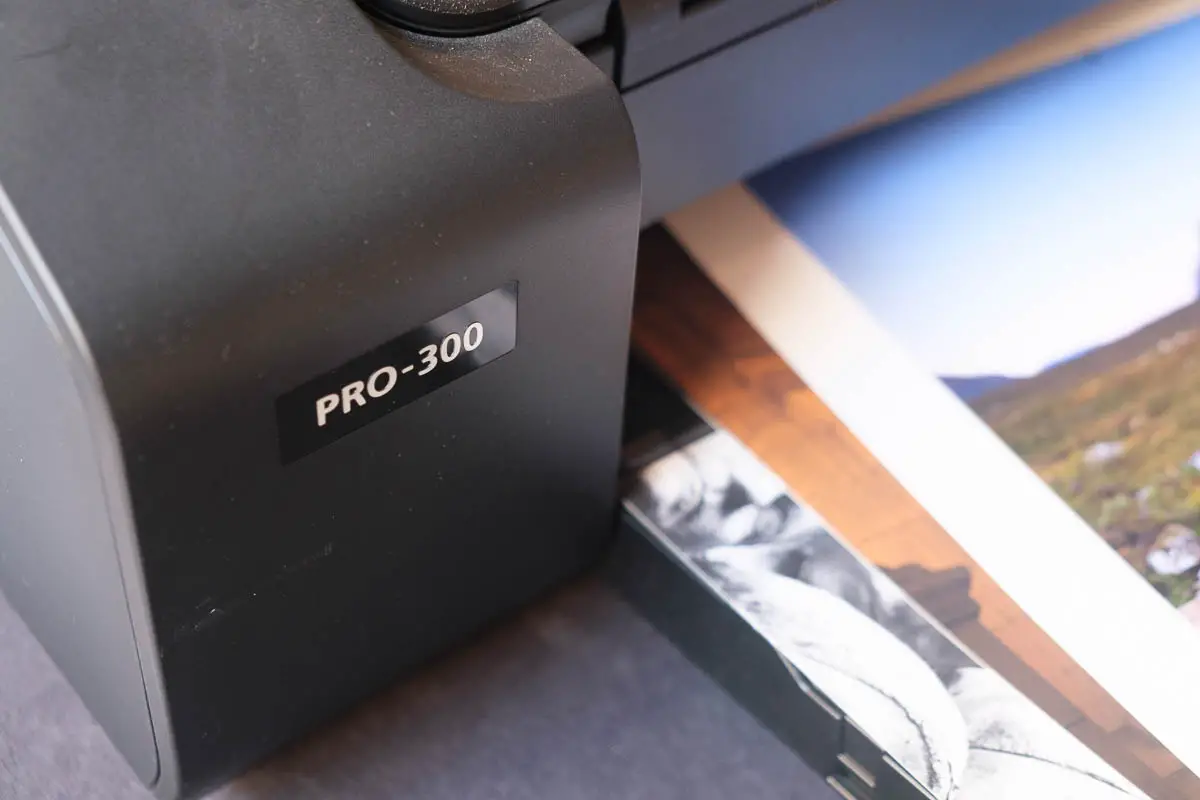













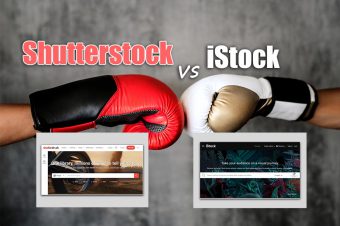
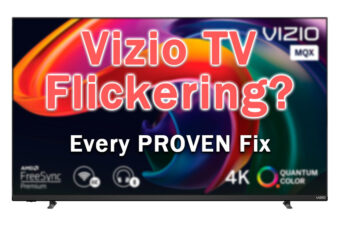
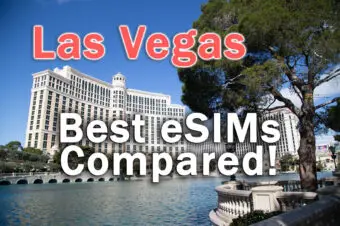
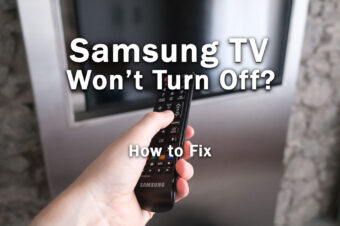
![Insignia Fire TV Stuck On Loading Screen? [FIXED]](https://www.lapseoftheshutter.com/wp-content/uploads/2021/10/insignia-fire-tv-stuck-on-loading-screen-340x226.jpg)
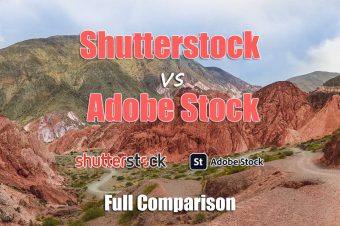
9 Responses
Jürgen
Hello!
I´d like to make a comment to your comparing the Pro-300 with the Pro-1000. You wrote:
“The Pro-300 beats the Pro-1000, in my opinion, based on two factors: the much lower price, and much lower official ink replacement cost. The Pro-300 is essentially a home version of the Pro-1000, designed to be used intermittently, rather than everyday. It takes up a relatively small amount of desk space for a professional photo printer, and far less than the Pro-1000.”
Excuse me, but most of this is totally wrong! The “much lower price” you´re speaking about is just 200€ at the moment (25.08.2021) and therefore you get A2 printing and not just A3 printing!!
And – there you are mostly wrong – the ink-costs of the Pro-1000 is more than 2.4-times cheaper than the ink-costs of the Pro-300. 14.4ml of ink for the Pro-300 cost about 15€ and 80(!)ml of ink for th Pro-1000 just cost 35€ which is 2.4-times cheaper!!
The only fact you´re right with is the need auf more desk space with the Pro-1000!
I hope I could help to correct this 🙂
Greetings, Jürgen
Tim Daniels
Hi Jürgen,
Thanks for the comment.
Prices of printers and ink vary across the world and at different times – currently the Pro-1000 is $400 more than the Pro-300 on Amazon US, which is the price I tend to go by.
The same is true for ink prices – a full set of Pro-300 ink is about $120, while the Pro-1000 is over $700. Although the price per ml is similar, in practice the Pro-1000 does seem to use more ink, but this might be due to the larger average print size, as you say.
Tim
Bernadette
Tim,
Thanks for all the research you’ve done. I have a question about the volume of prints made and how many per month, for instance, might be too many. I’ve been using Epson Workforce printers for photo prints and art prints, as well as prints on other materials like fabric transfers to imprint on fabric for swatches to sew into products I sell. I’m done with Epson, the ink cost and difficulty of using generic cartridges, and though the print quality has remained high, the quality of the printer is deteriorating. I’ve been looking at Canon printers and was set on the Pixma Pro 200, but reading here about the Pixma iX6820 I think that’s probably a better printer for me, though I might like the ability to print panoramic images. Getting ready for a show or an event each month or two I might make 50 various 8 x 10 to 12 x 18 prints and 25 or so prints on other materials, and I also print my own greeting and note cards on heavier card stock. That seems to me like a moderate use. I’m printing from my computer through Photoshop. Thanks for any information you can offer.
I love the book covers with your photos. I’m also a writer and a reader, and a book and book cover designer (and graphic designer), though most of the covers I’ve done have been illustrated, but I appreciate the search for exactly the right photo and thank those photographers for finding them.
Tim Daniels
Hi Bernadette,
If you’re making those standard print sizes in that volume, then the iX6820 is an excellent choice, and I would have no problem using it for that.
The only thing that might be worth mentioning is that the iX6820 (probably) isn’t too good at heavier cardstock. I say probably because it is difficult to get accurate figures – Canon state a very conservative max paper weight to avoid warranty claims.
Canon state that the iX6820 only prints up to 28 lb / 105 gsm which is on the low end for greetings cards, although you can probably get away with much heavier paper than this in practice.
By contrast, the Pro-200 handles up to at least 140 lb / 380 gsm and 0.8 mm of card thickness.
Overall, I think the iX6820 would suit you best, but the Pro-200 is better at handling cardstock and other materials, so it depends how much of your printing is on this.
Also, your animal photos are lovely! Thanks for sharing.
Tim
Bernadette
Thanks so much for answering so quickly! I appreciate your volume estimate AND the note that this printer may not handle heavier card stocks well. I have a laser printer that takes slightly heavier stock than that, and I’ve been using that while my Epson is having fits. I’m also considering a smaller printer dedicated to just cards. I actually think that would be more efficient for me. Whether or not I want to tie myself into stocking three different sets of printer cartridges is something else I need to think about. But I’m also thinking about being able to make prints up to 39″ long. I really appreciate your chart above for comparing all these variables.
I’ve rescued and fostered cats for 40 years, they’ve taught me so much about photographing animals. Thanks!
Bernadette
Keith
I just sold my epson 3880 and have a canon pixma TS9120 that I use for printing on inkjet paper. That canon didn’t do so well printing photos. So I was thinking of getting a printer that printed great photos but also would be my standard inkjet paper printer and then I would not need the 9120.
So, would the canon pro-300 handle my non photo printing?
Tim Daniels
Hi Keith,
The Canon Pro-300 would definitely handle non-photo printing, but might not be value for money in ink costs.
It has pigment-based inks so is more suited to photos than standard documents, and the per-page cost is going to be higher for non-photo printing than more basic printers.
It really comes down to how much photo printing vs non-photo printing you are doing, but the Pro-300 is definitely one of the best pure photo printers.
If you are making a lot of both types of print, then it might even be worth getting a cheap document printer in addition to the Pro-300, like the HP Envy 6055 – it would probably be cheaper to do this than use the expensive Pro-300 inks for regular documents if you are printing lots of them.
Ramon
Hi Tim,
Nice article but i don’t agree at this moment with you about the canon pro-100s.
You stated
Pros: Superior black & white; Photo lab quality prints.
Colour prints are indeed very good. but I am trying to get a neutral B/W print for quit some time now. I tested with several papers and settings but I did not manage it.
So do you have some tips for me, to try it ones again. Otherwise I am thinking of selling this printer and focus on the Epson 15000.
Kind regards
Ramon
Tim Daniels
Hi Ramon,
It is possible to get neutral B&W prints with dye-based inks, but I agree it that it does require more persistence.
The issue with getting a neutral black and white is that it generally depends on the light the print is seen under – prints under halogen bulbs will have a different response from daylight for example.
Keith Cooper did a video on this recently which is probably the best place to start -> https://youtu.be/D9mKah1lC7s.
I also recently had a go with the Canon Pro-300, which uses pigment inks and really does give neutral B&W, if you are looking for a new printer -> https://www.lapseoftheshutter.com/canon-pro-200-vs-pro-300/.